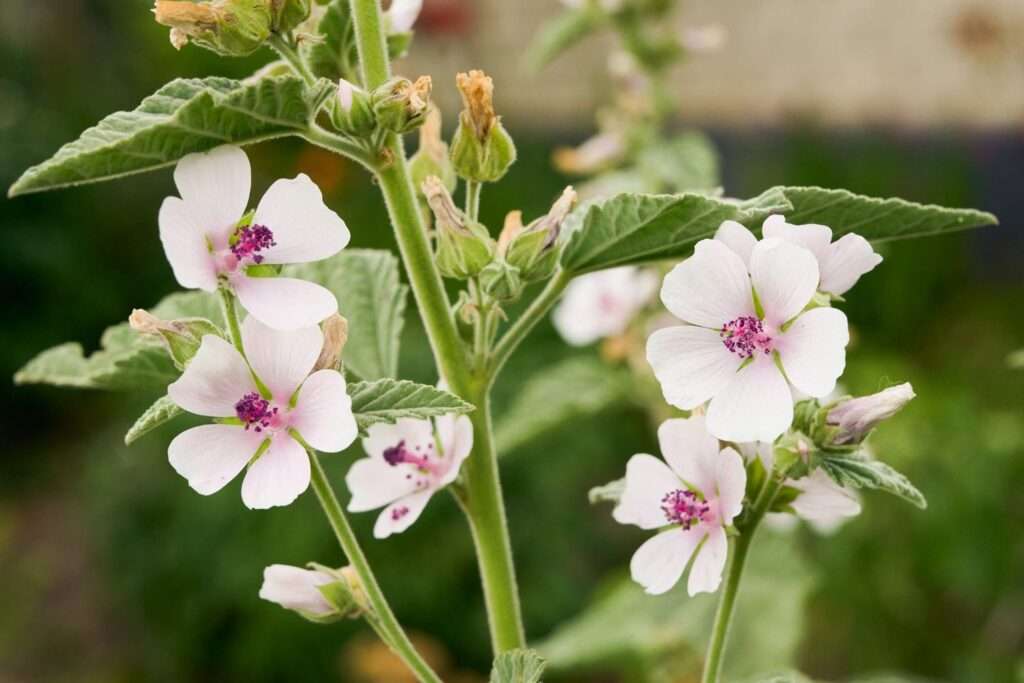
Description
Usually located near bodies of water, marshy environments are home to the plant. Its round or heart-shaped leaves have prominent veining. The pinkish flowers have a diameter of around 5 cm and are carried on stalks that grow around 1.8 meters (6 feet) tall. In the past, the root was utilized to manufacture the candy marshmallows.
Habitat
Native to Eastern Europe and northern Africa is this species. It is now well-established in North America as well. Usually located near bodies of water, marshy environments are home to the plant.
Uses
You can eat the roots, leaves, and blossoms. The mucilage in the leaves and roots of marshmallow are used as a throat remedy, usually in the form of a tea. They reduce mucous membrane irritation and alleviate discomfort.

Plant Care
- Light
Marsh mallow plants do not thrive in partial shade; they require full sun.
- Soil
The marsh mallow plant prefers moist, swampy environments, as its name suggests. This plant will thrive in an area of your property that receives full light and regularly humid soil.
Marshes also have circumstances that are mildly acidic. You can mix in sand and compost, even used coffee grounds, to make a slightly acidic, moisture-retaining sandy loam soil. However, since these plants don’t care too much about the pH of the soil, don’t worry too much about creating acidic soil conditions.
- Water
Marsh mallow plants require moisture. They most likely won’t grow well if you try to cultivate them in an area that stays dry most of the time. Still water locations, however, could be too damp for them.
It is true that the plants require a pretty constant level of moisture. It can be beneficial to use soil additions that retain moisture, including organic matter. You’ll know the moisture levels are favorable if your plants come back the year after you planted them.
- Temperature and Humidity
Being hardy plants, marsh mallows can survive in a wide range of temperatures and humidity levels. Although they will wilt away in below-freezing weather, they are incredibly cold tolerant. Still, they will reappear in the spring.
- Fertilizer
Applying a specific type of fertilizer isn’t really necessary for marsh mallow plants because they can grow in a wide range of soil conditions—they can even withstand salty soil—especially if the soil has already been amended with organic matter.
Table





